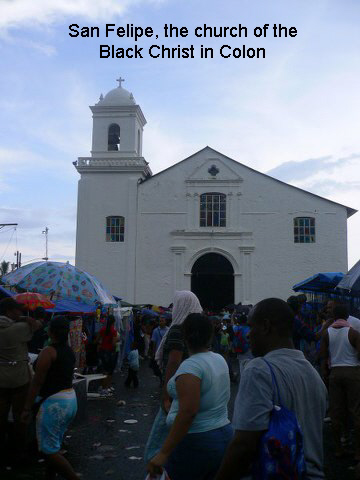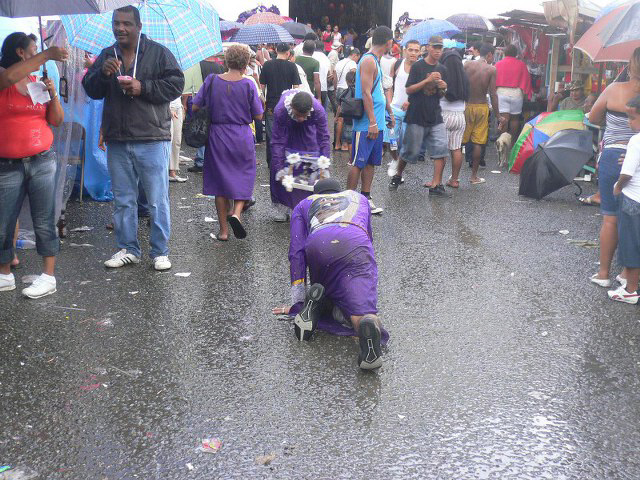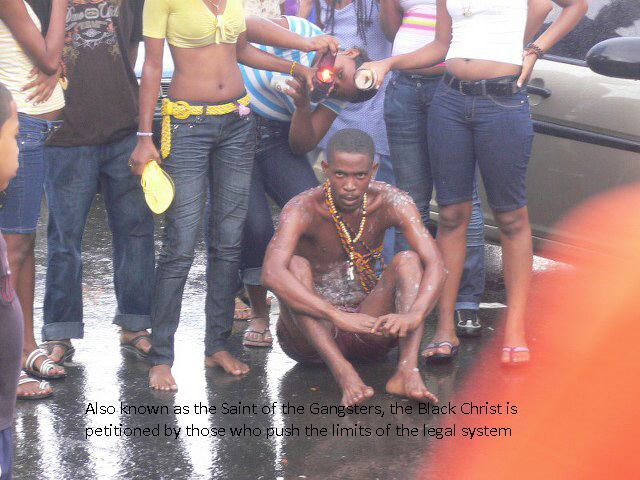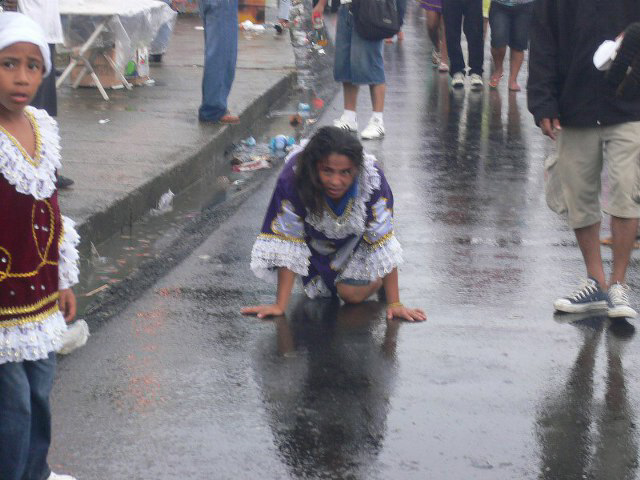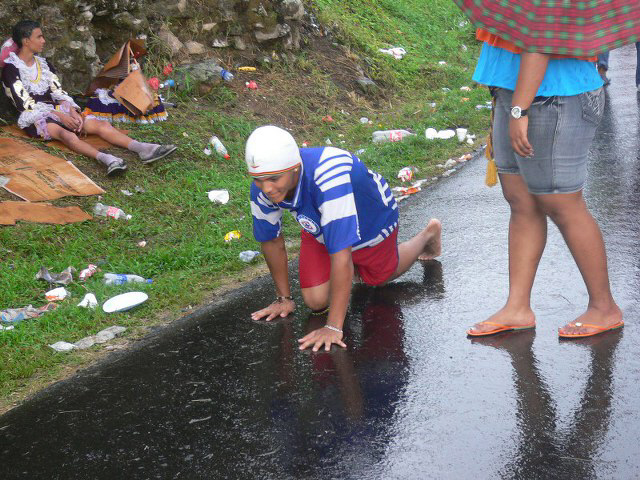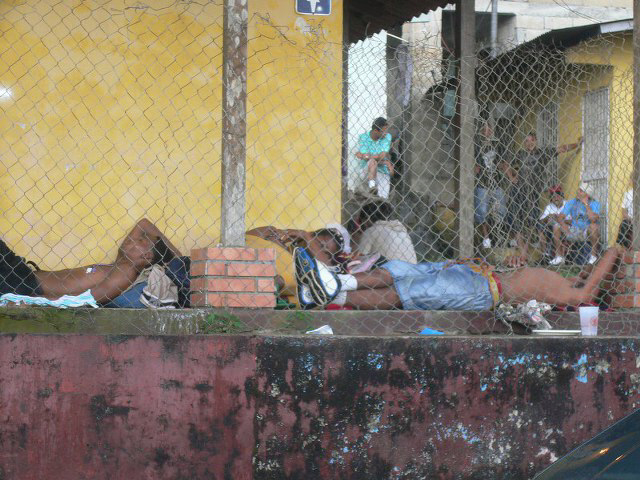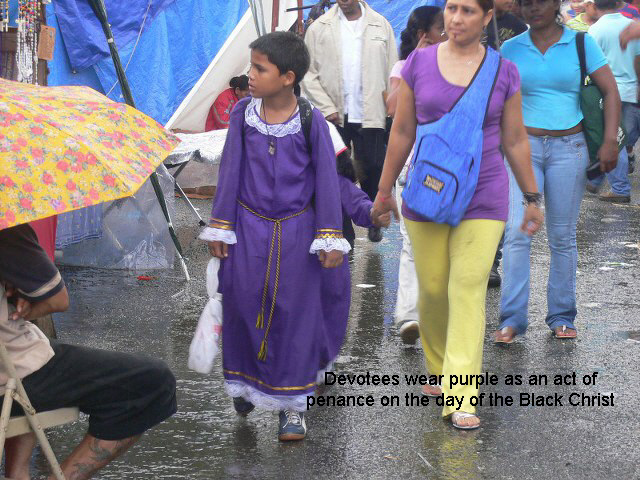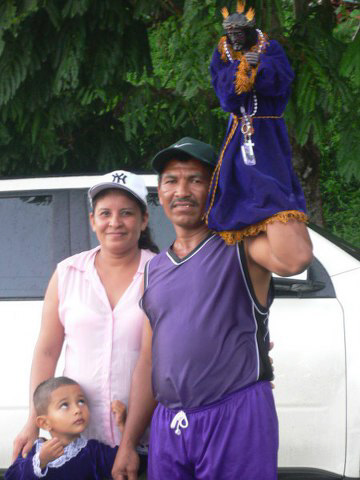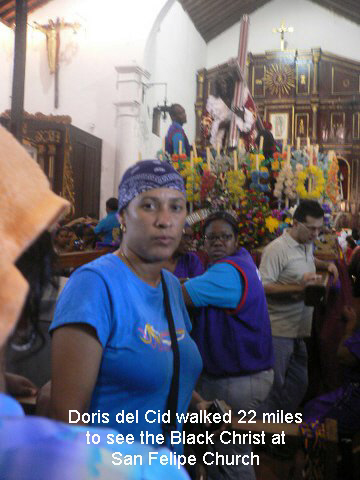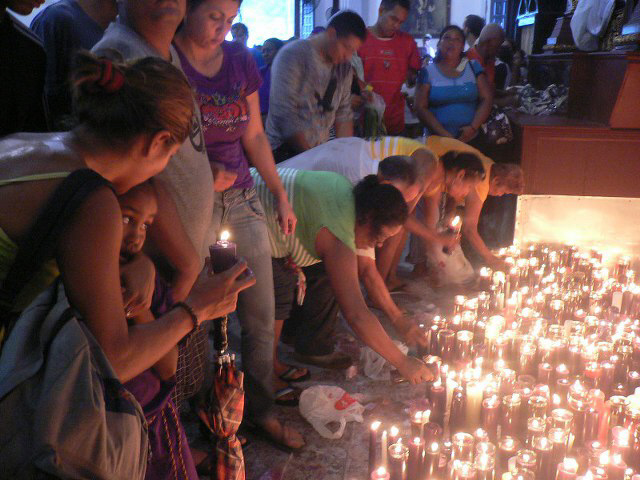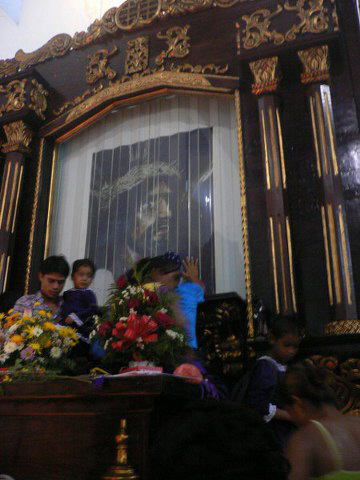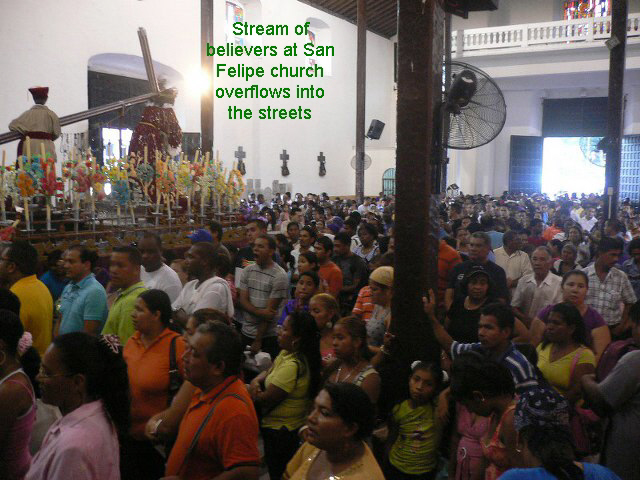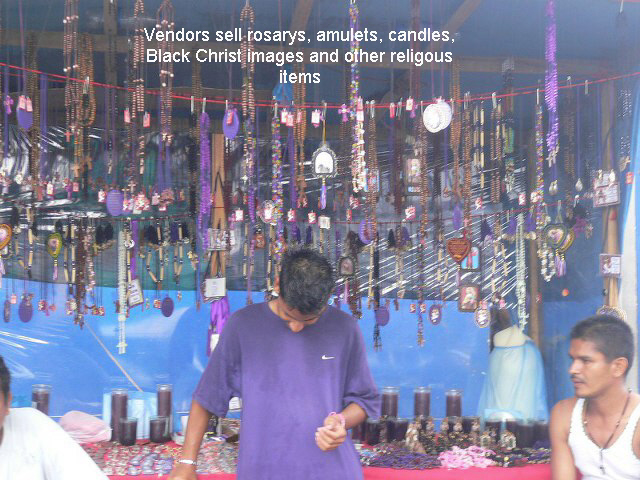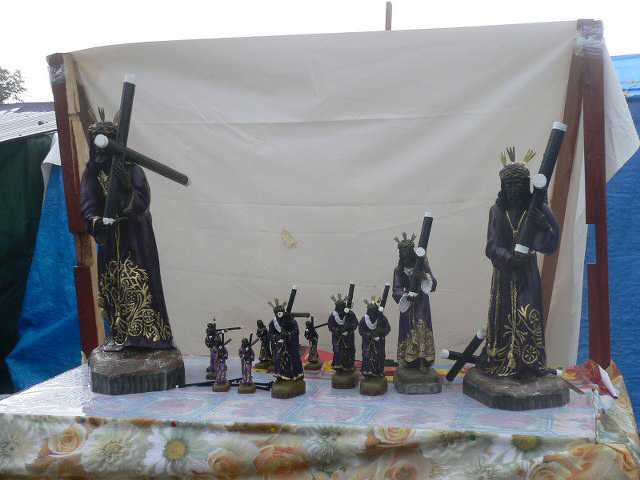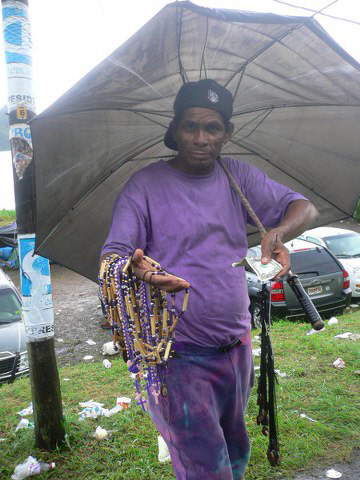Panama's Black Christ of Portobelo
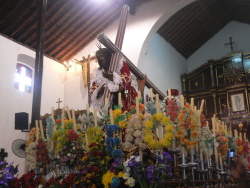
(This article was first published on Playacommunity October 31, 2008) Every year, on October 21, the small colonial village of Portobelo, located on Panama’s Caribbean coast is overwhelmed by thousands of pilgrims who arrive to pay homage to the Black Christ. Stories of magic and miracles surround the image, which is enough to draw people from all over Panama to make a grueling pilgrimage. The atmosphere is a mixture of religious fervor and festival. There are vendors selling religious items, a lively procession of the Black Christ statue and people having hot wax poured on their bodies to increase the level of pain as penance towards purity. No one knows for sure when the wooden image of a Black Christ appeared in the village, but some date it around 1658. There are several accounts about how it arrived. Stories agree that it arrived by ship and was carved in Spain. One story tells that the ship destined for Peru or Cali, was blown by a storm into Portobello. Several attempts to leave the port met with bad weather, until finally, the seamen decided to throw the heavy cargo overboard to lighten the load. The Black Christ was one of the items.
Villagers and pilgrims believe that the magic surrounding Black Christ wishes to stay in Portobello and cannot be moved.
Worshipers arrive in the village of Portobelo on foot. Some walk 53 miles from Panama City. Most others walk 22 miles from Sabanitas, and many crawl the last mile to the church on their hands and knees. Pilgrims wear purple robes, which are discarded at midnight at the foot of the church. The robes denote the wearer as someone following a divine order, or a person doing penance for wrong doing, or someone expressing their intense faith in the miracle of the Black Christ.
One miracle is said to have occurred on the arrival of the Black Christ. The Portobelo population was in the grip of a cholera epidemic. A desperate settler prayed to the Black Christ for help. The next day the epidemic disappeared. Other miracles are said to occur in the lives of believers. Doris Del Cid, who walked 22 miles to see the Black Christ has been doing this for the last seven years.
“My mother had cancer, so I made a promise to the Black Christ and she recovered. Since then I started walking to Portobelo for this event. I start walking at 11 pm and get here at 5am. It is hard, because it’s a really long distance. October is rainy month and is cold at night, but when I get close, I find the strength to run up to San Felipe Church. When I see the Black Christ I feel extremely excited and can’t stop crying”.
Like Doris, Ismael Rivera a salsa singer has also been coming for the last seven years. Ismael walks the 53 miles from Portabelo wearing black robes and having hot wax poured on his body. Ismael credits the Christ for saving his career from the clutches of a drug addiction. The singer also dedicated a well known salsa song to the Black Christ, called “El Nazareno”.
Like Doris and Ismael, many devotees return year after year to ask favors. However it is warned that promises made to the Christ must be kept. Believes say “El Cristo Negro cobra”, or the Black Christ collects dues.


